When people think about surfing, they usually think of faraway exotic islands such as Hawaii or Bali, or the coastlines of Mexico or the Mozambique. Did you know that Europe also offers many amazing surfing opportunities? After all, the biggest wave has been surfed on ‘the old continent’.
The Cradle of Surfing
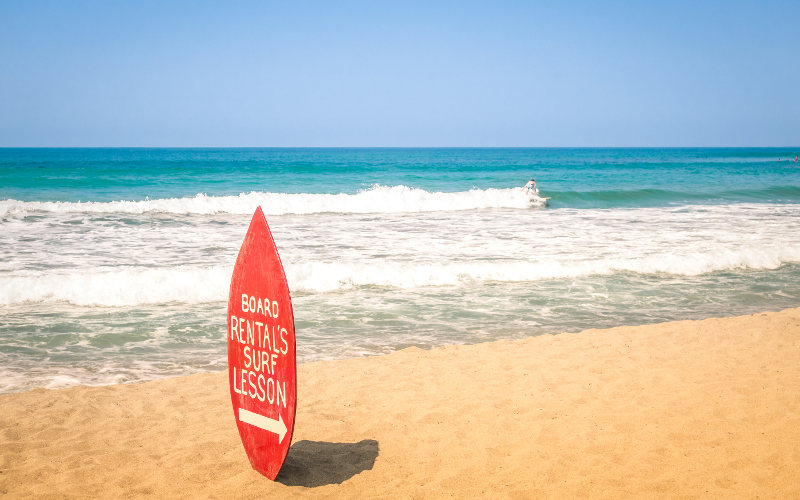
In the ’60s, surfing was nothing more than an odd pastime that only had a few fans. It originated in Polynesia but the first steps of modern surfing can be traced back to Hawaii. Later, in the ’80s, the fashion industry found inspiration in the surfing subculture which caused a large revolution. Thanks to this new trend, masses of people suddenly became interested in surfing.
These days, the sport is very popular and has spawned many other types of sports, such as kitesurfing or kiteboarding (surfing while pulled forward by a large kite) and stand-up paddleboarding (surfing while propelled by paddle), which is commonly practiced on lakes or town canals.
Though Europe only has relatively small spaces fit for surfing, it still offers amazing opportunities. The surfing scene in Europe is relatively young. Surfing came to Europe around the ’90s when surfers from other parts of the world began looking for new opportunities and hunting for waves abroad. Nowadays, surfing in Europe is common and it’s even home to surf & soul style resorts which combine the sport with meditation, yoga, massages, and consultations about a healthy lifestyle.
Record-Breaking Portugal
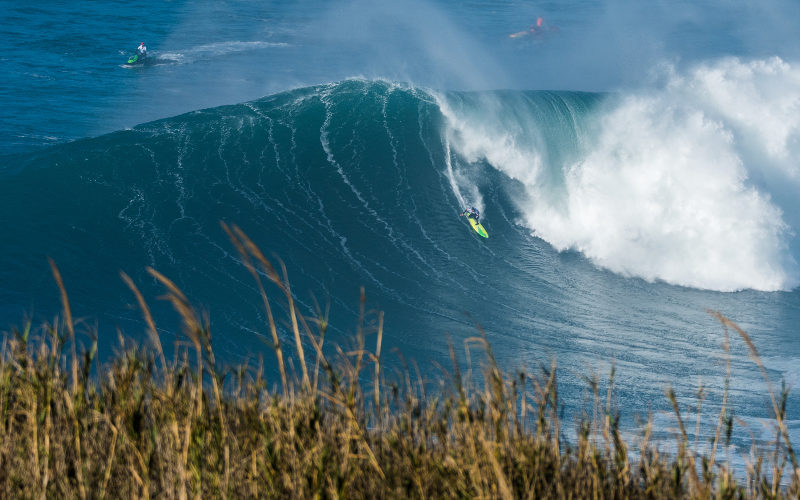
Portugal is absolutely amazing for surfing. There’s no other country in Europe that can boast such a great location on the sunny Iberian Peninsula. It has access to about 1000 km of the Atlantic shoreline and the temperature is also very pleasant. The coast of Portugal is a great place for surfing and kitesurfing and welcoming towards both beginners and professionals.
The shore around the parish of Ericeira on the western coast of Portugal, 30 km away from Lisbon, is among the favorite spots for professional surfers. The location offers the best swell (surface waves created by the wind) at the beginning of spring and in late autumn. The sea gets pretty cold during the winter, so be careful.
The Coxos beach is considered to offer one of the best waves in Portugal. Its big advantage is that Ericeira doesn’t belong to the most crowded surfing destinations and offers more than just great waves. There are plenty of comfy cafes, restaurants that serve delicious seafood, and wine cellars.
Experienced surfers usually head to the small village of Nazaré, which is home to the largest waves in the world. The beach of Praia do Norte holds the world record for the largest wave ever ridden. Surfers in the area can experience some of the best a-frame waves. A-frame waves break into an A shape thanks to a combination of an underwater canyon and favorable winds.
If you’re a surfer who loves a good party, you absolutely have to visit Lagos in the Algarve region. It’s home to several beaches, such as Praia de Dona Ana, Praia do Camilo or Meia Praia, which offer warm waves during every season.
When talking about Portugal, we can’t forget about the Madeira Island, located 1200 km southwest of Portugal’s mainland. The first surfing enthusiasts discovered its potential back in the ’70s but it never became a mainstream surfing destination. The west coast is the most popular nowadays with Jardim do Mar being one of the most traveled-to destinations. The island also offers other first-class surfing spots – Ponta Pequena, Paul do Mar, and Fajã da Ovelha.
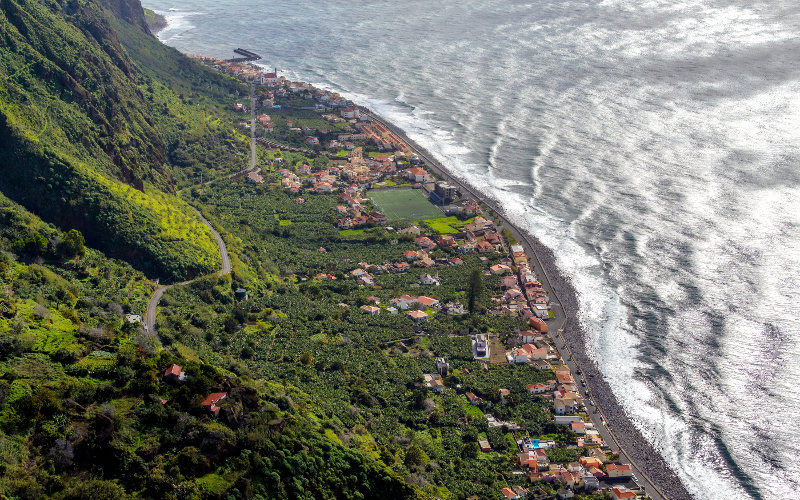
Hawaii in Europe
Spain takes up most of the Iberian Peninsula but when it comes to its access to the ocean, it seems to draw the short end of the stick compared to Portugal. However, it still boasts a place that’s unique when it comes to surfing, the Canary Islands and you can also fight the waves on its northern coast.
You can experience some serious “right hand” waves (waves that break on the surfer’s right side) on the coast of Punta Galea near the town Getxo in northern Spain. The area has a reputation for having some of the strongest currents in the world. You can imagine what these waves can do when smashing against a 60-meter-high cliff during surfing season. Santander also offers similar waves and the port town atmosphere complete with typical tapas restaurants as well as bars filled with cigarette smoke and proud local patriots who will tell you hundreds of stories.

If you decide to go south, don’t miss Costa de Luz, a town located only a few kilometers southwest of Seville. It has nice weather throughout most of the year and the waves usually reach a height of around 1,5 meters, which makes them ideal for surfing newbies.
Lanzarote is among the places with a good reputation on the Canary Islands. The season here is at its peak from October to April. The same also goes for the island of Fuerteventura which is sometimes also nicknamed the European Hawaii. The waves are often too high for comfort and you can encounter a European version of the Hawaii “pipeline” (a famous wave in the form of a tunnel) which experienced surfers can try for themselves. These sorts of waves are also often called tubes, barrels or kegs. You can get the best wind here around noon.
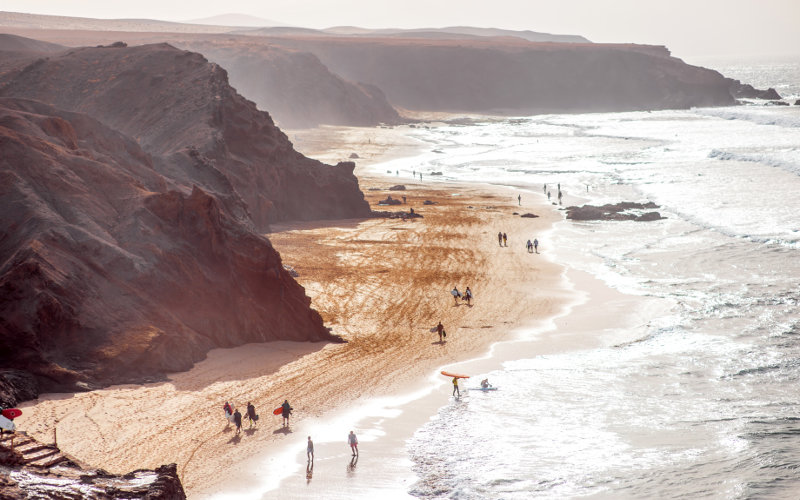
Small but Good
The Apennine Peninsula doesn’t belong among Europe’s top surfing destinations but its nice weather and ideal waves often attract kitesurfers. In Italy, the coast of the Adriatic Sea offers the best surfing conditions. During autumn, Sicily is also a great place to be because the waves go up to 3 meters. Sardinia is home to the well-known surfing spot of Capo Mannu which is suitable for advanced surfers.
The Place Where Everything’s Cool
France does a good job in keeping up with all of the other surfing destinations. On its west coast, the Bay of Biscay offers great surfing conditions. The surroundings of the town of Biarritz are a classic, considered as the cradle of surfing in Europe. It has a Californian vibe, mixed with French culture and the atmosphere of the town is considered pretty ‘cool’. There are plenty of surfing schools to choose from, so you can visit even if you’re a newbie.
The best time to visit is during September and November. Many festivals and contests are annually organized here so you won’t get bored. La Grande Plage is usually packed, so you’ll do good to try the lesser known La Côtes des Basques, Anglet or Guethary.
Hossegor, located a bit north of Biarritz, has the attractive image of a surfing village. During the summer season, you can meet the stars of surfing here. If you prefer your beaches less crowded, you can visit in the spring or in autumn. Belharra near Saint-Jean-de-Luz is known for its ‘reef break’, waves that break against the rocky sea bottom.
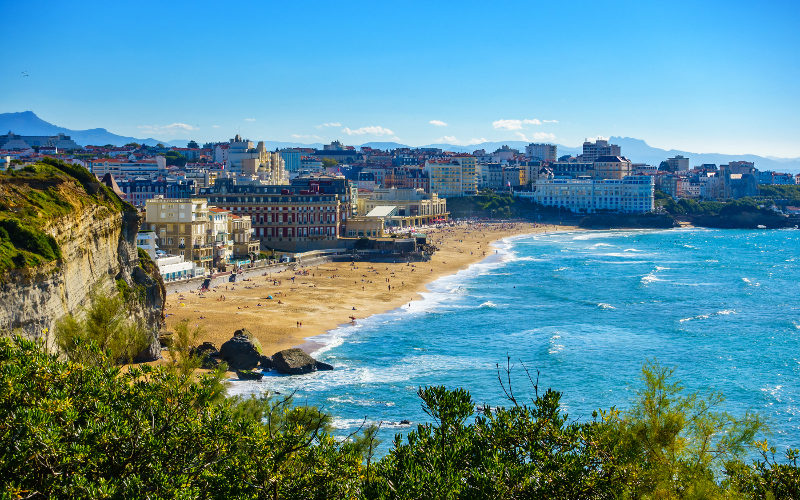
Cold and Even Colder
The Netherlands are colder than Spain but can also offer a lot to surfers. Scheveningen is especially sought-after because of its perfect waves, beach bars, and camping opportunities. Experienced surfers usually visit during autumn and in the winter when the waves are best.
Denmark is even further north but it still attracts a fair share of dedicated surfers. The village of Klitmøller is especially popular and also carries the nickname ‘cold Hawaii’. If you don’t mind the cold and you’re comfortable in a thicker neoprene suit, you can safely head on over. The place has a cult status among the surfing community because of the annual Cold Hawaii Film Festival.
When it comes to the cold, no surfing spot is colder than Norway. If you don’t mind the cold and empty beaches, be sure to check out Hoddevik. It offers the beauty of untamed nature and high waves which are the best in autumn or winter. Of course, you have to count with shorter days in December and January.
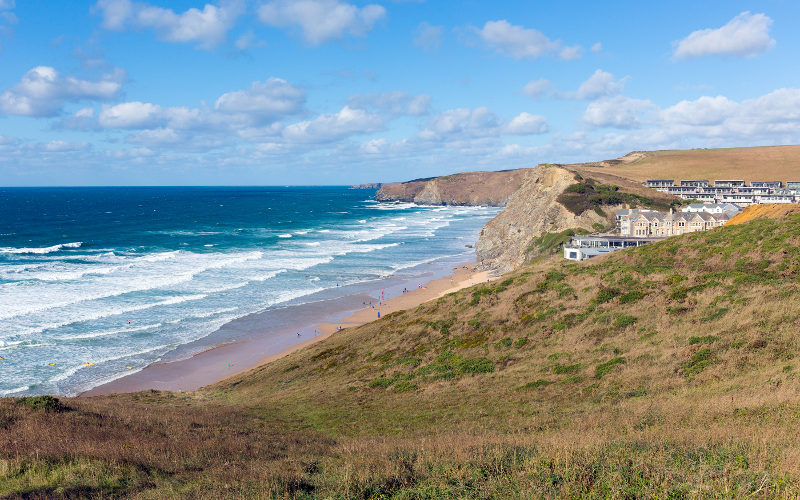
British and Irish Surfing
Ireland is one of the coldest but most popular surfing destinations. The waves here are magnificent for more experienced surfers and the wide shore is great for beginners. Bundoran is a favorite and the locals have surfing in their hearts. Many people from near and far come here to catch some waves and then grab a bottle of beer.
Mullaghmore Head is home to the largest waves in the area. It’s ideal to surf them while the tide’s coming in but avoid tunnels. If you get caught by one, it will hurt.
The town of Newquay is one of the oldest surfing towns in England. People have surfed here since the ’60s. The waves are steep, fast, and dangerous so it’s no surprise by the place is called the ‘Widow Maker’.
What about you? Will you try to go surfing this year?